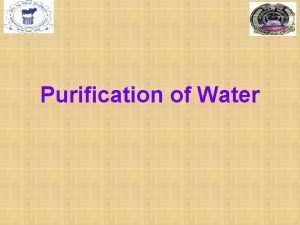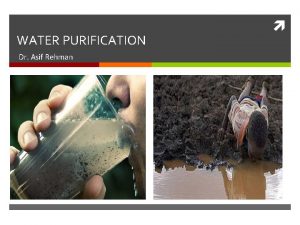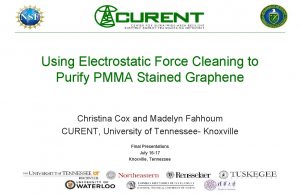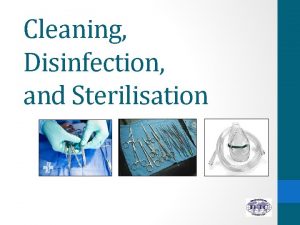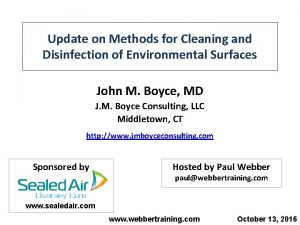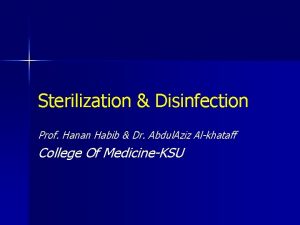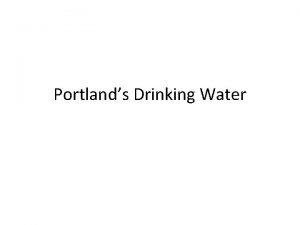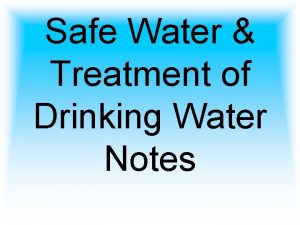Solar Disinfection of Drinking Water Safe Drinking Water








- Slides: 8

Solar Disinfection of Drinking Water Safe Drinking Water for Developing Nations and Anywhere in an Emergency

SODIS: SOlar DISinfection Photo credit: Eawag

SODIS �Developed by Prof. Photo credit: sodis. ch Aftim Acra at American University of Beirut �Further refined and promoted by Swiss Federal Institute of Aquatic Science & Technology (EAWAG) �See: www. sodis. ch �And numerous others since

SODIS Methodology �Use clear, colorless PET, <2 Liters �Aerate water by shaking, for best results �Turbidity <30 NTU; otherwise filter first

Mechanisms of Disinfection �UV-A (320 -400 nm) interferes with DNA/RNA replication, cell metabolism, structure �Also generates free radicals and peroxides that attack biological materials �IR light heats the water, speeds reactions. At 50 C, disinfection is 3 X faster �Hence corrugated metal roof, or blackpainted board can be useful.

Health Advantages �Kills most of the most dangerous waterborne pathogens. �Does not eliminate other vectors of disease (e. g. , other fecal-oral pathways) �Overall, using communities experience 3080% reduction in diarrhea

Health Disadvantages? �Toxic plastic leachate? �PET contains NO bisphenyl A (BPA) �Adipates and phthalates: Tests show after 17 h at 60 C, levels far below WHO guidelines, and about same as highquality tapwater �Antimony (Sb) is released in tiny amounts but far below WHO guidelines

Current Application � 33 countries including: Bhutan, Bolivia, Burkina Faso, Cambodia, Cameroon, DR Congo, Ecuador, El Salvador, Ethiopia, Ghana, Guatemala, Guinea, Honduras, India, Indonesia, Kenya, Laos, Malawi, Mozambique, Nepal, Nicaragua, Pakistan, Perú, Philippines, Senegal, Sierra Leone, Sri Lanka, Togo, Uganda, Uzbekistan, Vietnam, Zambia, and Zimbabwe.
 Double pot method of disinfection of well water
Double pot method of disinfection of well water Safe feed safe food
Safe feed safe food Safe people safe places
Safe people safe places Water and water and water water
Water and water and water water Double pot method of water purification
Double pot method of water purification Electrostatic disinfection chelsea
Electrostatic disinfection chelsea Differentiate between disinfection and sterilization
Differentiate between disinfection and sterilization Dry mist disinfection machine
Dry mist disinfection machine Sterilization and disinfection
Sterilization and disinfection
